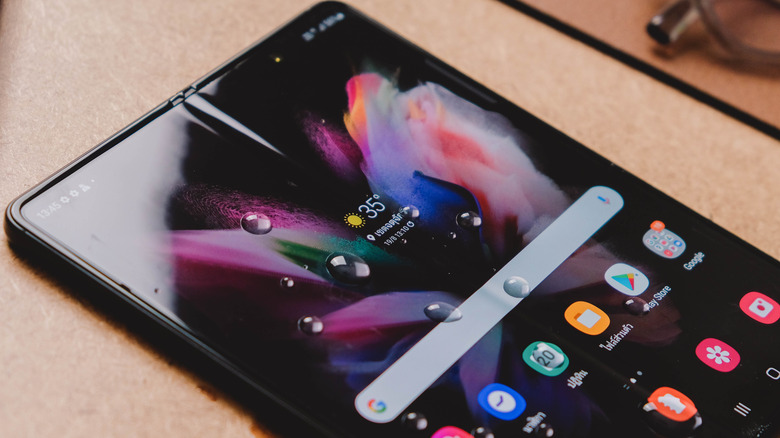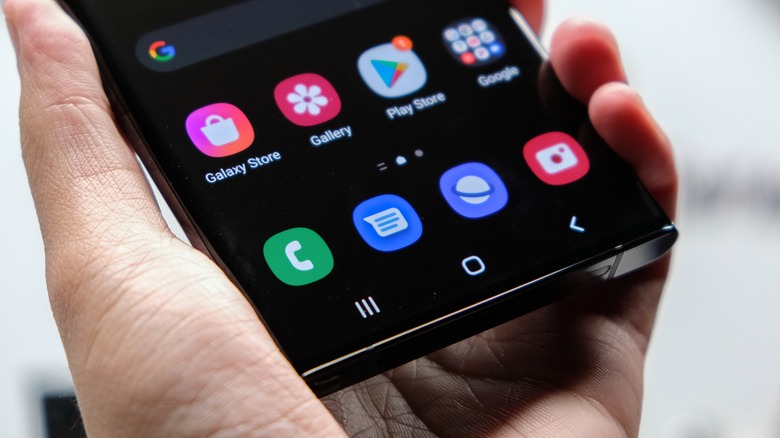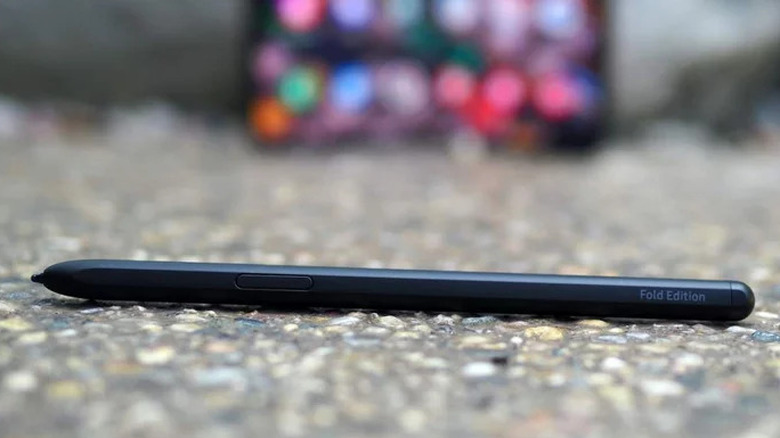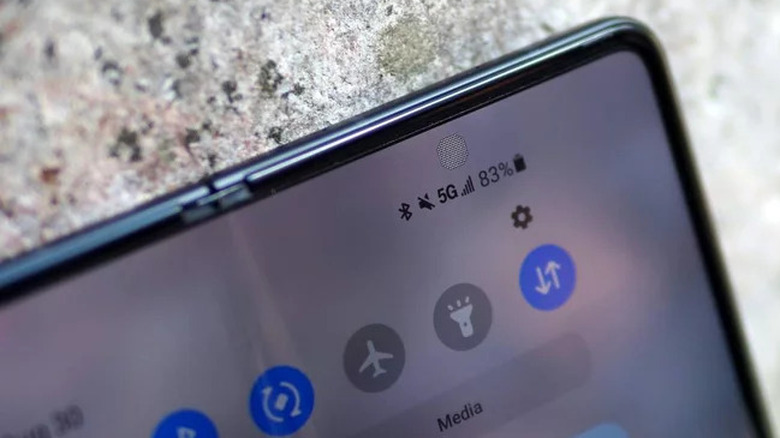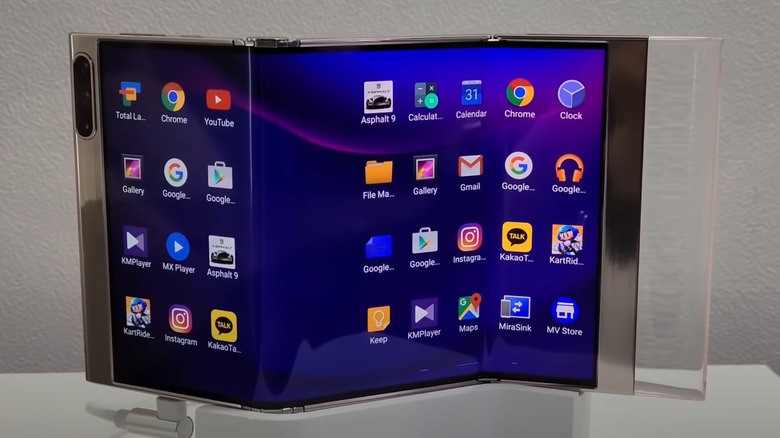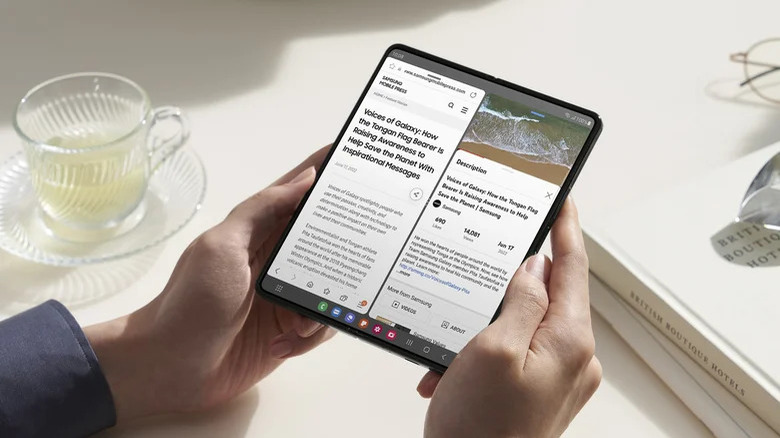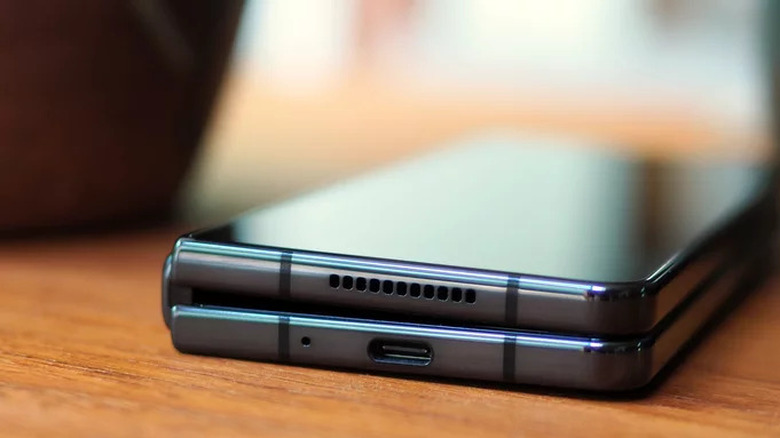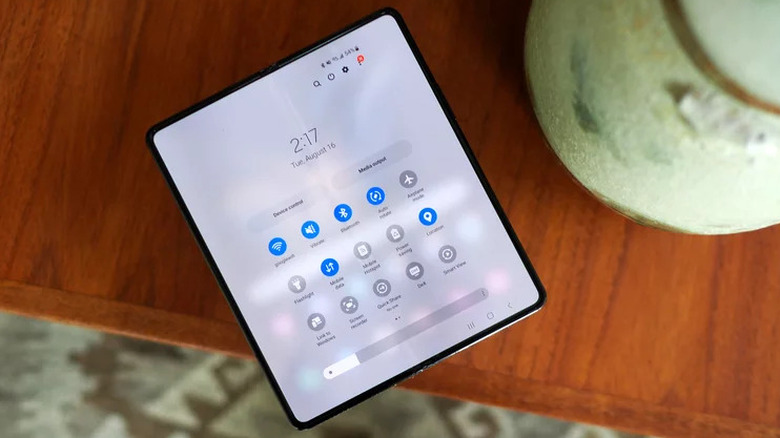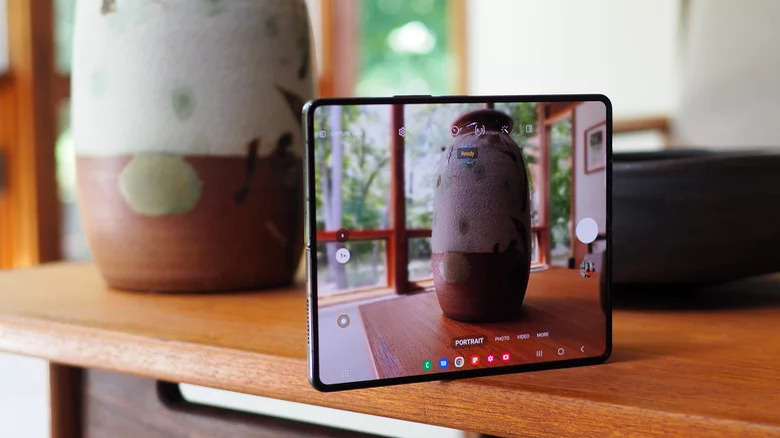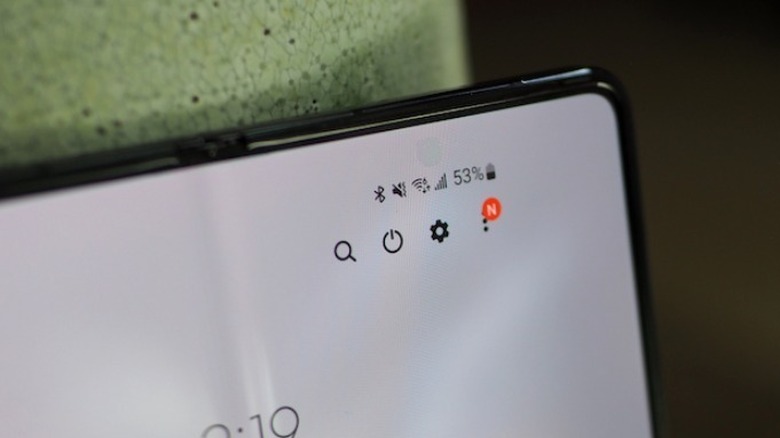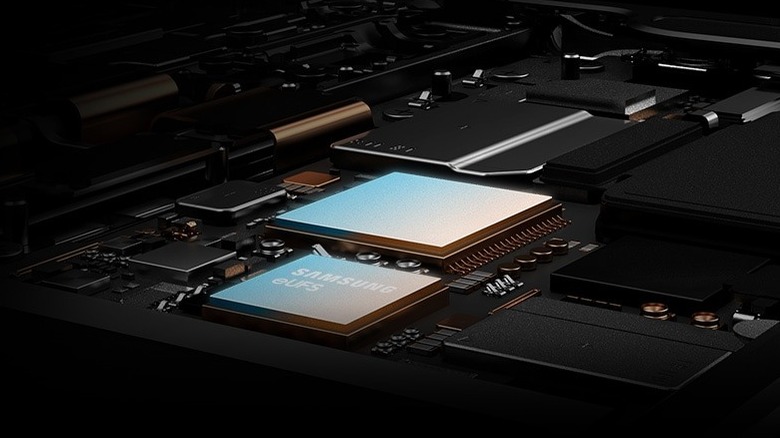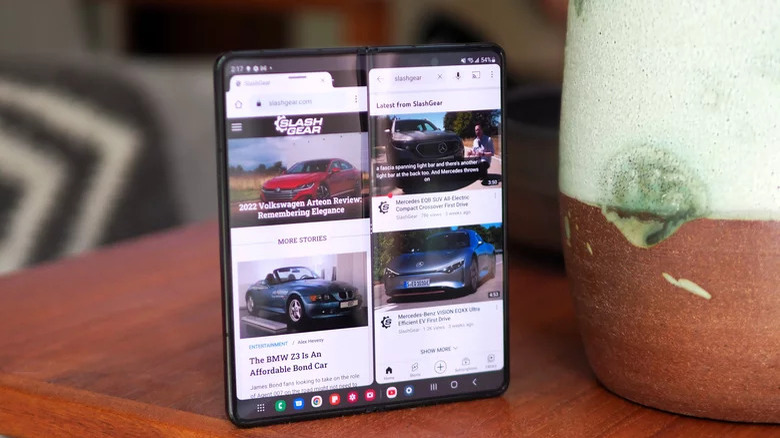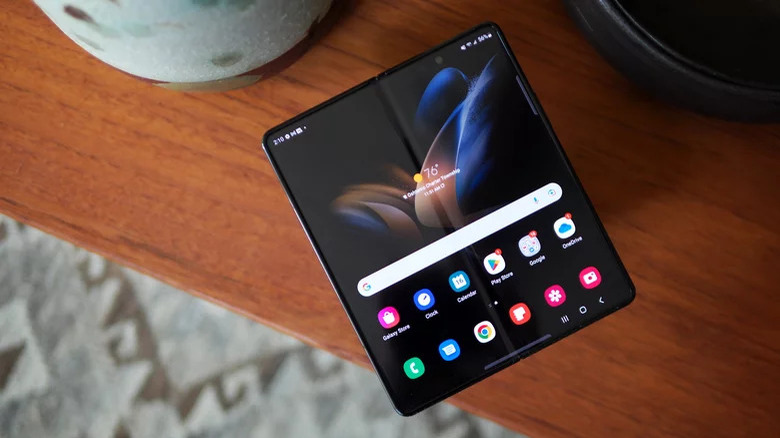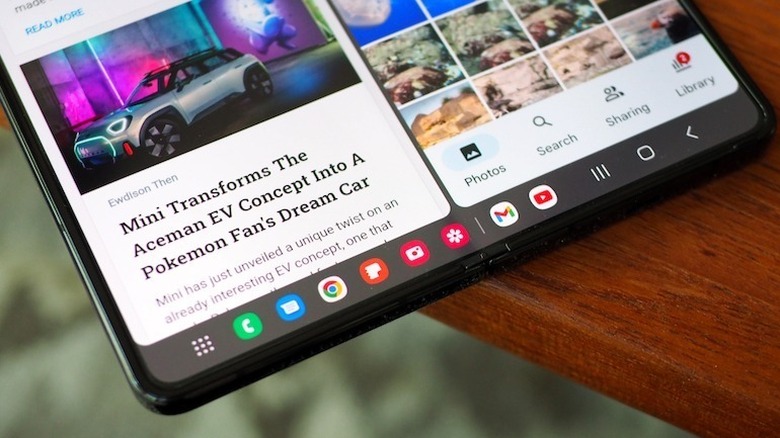Samsung Galaxy Fold 5: Features The Next Foldable Desperately Needs To Have
We may receive a commission on purchases made from links.
The first mass-market foldable smartphone, the Samsung Galaxy Fold, came out in 2019. Since then, Samsung has grown with successive yearly iterations, with over 62% of the foldable market as of August 2022. The company is far from done, with forward-looking statements saying that it expects over 50% of its premium smartphone shipments to be foldable devices in the coming years. That is possible, even with the $1,800 starting price of the Galaxy Z Fold 4, which could be called the most refined foldable on the market.
The problem is competitors are starting to catch up. While Samsung had a head start and has immense display technology know-how, almost every other smartphone maker has at least one foldable out. The notable exceptions are Apple, which has accrued rumors about foldable devices for years but with no sign of any prototypes, and Google, rumored to have a foldable Pixel in the works. Many other Android manufacturers and their sub-brands, including Oppo, Xiaomi, and Huawei, have devices ready to battle with the Fold range once they can get their products certified outside of China.
We've got some thoughts about how Samsung could keep its grasp on the foldable market by making the Galaxy Z Fold 5 the best foldable ever.
Fewer Samsung apps
It's 2023, and Samsung still insists on recreating core Android apps and branding them as their own. Maybe that's because the company thinks Apple's iPhone is its primary competitor, instead of the other Android manufacturers. Or because its own app store can scrape off a percentage from the apps people download, a percentage that would otherwise go to Google. That includes in-app purchases, like those in Epic Games' wildly popular game, "Fortnite." The only place to find that game is on the Galaxy Store after the developer refused to pay the percentage of all in-app purchases to Google and Apple.
Just use the Android stock apps to have more free storage space. You're the leading Android smartphone manufacturer, with over twice the market share of the next biggest competitor, Xiaomi, according to AppBrain.
Android is fragmented enough, with every manufacturer using different components and designs with their own reskinned versions of Android. Users don't need the Samsung Internet Browser, Samsung Music, Bixby, or Samsung Mail. What they do need is usable storage space, and plenty of it. Leave Google to develop the core Android apps and save some development cash.
A place to stow the S Pen
Samsung could make many of its fans even happier when the Galaxy Z Fold 5 releases by providing an internal silo to stow the S Pen. S Pen support is a given after its inclusion on Fold 3 and Fold 4, but we shouldn't have to buy a case to stash the stylus.
Oh, and the stylus should be included. Making the early adopters that want a foldable device to pay another $50 (or more) for the S Pen is a little much when they've already paid $1,800. Galaxy S23 Ultra buyers didn't have to pay extra for the stylus; Fold fans shouldn't either.
Put a slot into the Fold 5 to store it S23 Ultra style. It won't steal sales from the Ultra; fans of the phablet won't be buying foldables any time soon. It will quell the annoyed Fold fans who had to put a case on their foldable to slip the S Pen into a pocket. The S Pen should be usable on the cover screen, too. Only the internal screen works with the stylus on Fold 3 or 4. The outer screen is a perfect size for jotting down brief notes, which you'd use the S Pen to make.
No crease
Samsung is at the top of the display game, but the Fold series hinge is holding it back. Redesign the Fold 5 so that the screen gets a reduced crease, or even find a way to remove the crease altogether. The competition already uses waterdrop-shaped hinges, which enable the flexible AMOLED panels to curve at the folded section while allowing the two halves to lay flat.
Oppo, Huawei, and Xiaomi all use this hinge style, making their foldables thinner and flatter so they can easily be stowed in pockets and bags. Samsung has stuck with a more traditional hinge that keeps a gap between the screen halves when folded. This hinge had issues on the original Fold, leading to a recall on the first batch and a subsequent delay of a wider release.
In 2022 we discovered that Samsung had tested waterdrop hinge designs for its foldables. The company decided against using these designs for one main reason — it reduced the ability of the hinge to repel water. That would have meant losing the IPX8 waterproof rating, something Samsung wasn't prepared to do. Something seems to have changed since that report. Noted leaker Ice Universe said recently that the Galaxy Z Fold 5 will use a teardrop design and fold completely flat when closed. This will also reduce the creasing effect, making the inner screen look better and feel better to type, swipe, and write on.
A 360 screen
Every generation of Galaxy Fold has a screen that only folds one way so that it ends up inside the folded section. With how complicated making a foldable, self-emissive screen is, limiting it to folding in one direction was probably the wise move at first. We've seen brief tech demos from companies like Xiaomi with foldable screens that bend in multiple places, but nothing has made it to a consumer product yet. That doesn't have to be the case for the Galaxy Fold 5.
Samsung Display has AMOLED screens that can be folded in either direction so that devices can have an S-bend or be folded inwards or outwards at the same point. There was even a rumored Z Fold S with a 360-degree hinge to fold both ways. Samsung Display has pushed AMOLED forward so its newest panels can fold and slide.
Called Flex Hybrid, this tech makes the inner screen wider while taking up the same amount of space when folded and retracted. The current prototype is 10.5 inches in 4:3 aspect ratio, or 12.4 inches in 16:10 ratio when stretched out, so it's substantially larger than the Fold 5 will be, but there's no reason Samsung couldn't shrink this tech to pocket size.
Thinner design
The rest of the foldable market is putting out thinner and lighter phones — the Galaxy Fold 5 needs to follow suit. The current Galaxy Z Fold 4 weighs 9.28 oz (263g). Compared to the 8.25 oz (234g) weight of Samsung's next largest-screen smartphone, the Galaxy S23 Ultra, the Galaxy Fold 4 is a full ounce heavier, which adds up when carried around all day. Samsung needs to find some way to slim down its next Fold. Otherwise, the competition is going to catch up. The main thing in Samsung's favor here is that most companies creating foldable phones have released them in China only.
That's starting to change. Oppo recently released the Find N2 foldable, which features a 7.1-inch screen at a similar resolution to the Galaxy Fold 4. The Oppo Find N2 weighs 8.2 oz (230g), lower than the Galaxy S23 Ultra's weight and substantially lower than the Galaxy Z Fold 4.
One way Samsung could shave some weight and thickness away is by redesigning the hinge to use a teardrop shape, as mentioned previously. That change would reduce the thickness by 3mm to 13mm when closed. A thinner hinge would also need less metal, slightly decreasing the device's weight.
Better battery life
Another thing Samsung could improve on the Fold 5 is the battery life. The Galaxy Z Fold 4 packs 4,400 mAh of capacity, split between the two halves of the device. That's enough for all-day usage in our recent testing, with several provisos about heavy video watching or game playing shortening that time. That battery capacity is on par with the other devices in this market segment. The Oppo Find N2 has a 4,520 mAh battery, the Xiaomi Mix Fold 2 has a 4,500 mAh one, and Huawei Mate Xs 2 uses a 4,600 mAh battery.
The space inside the device limits the battery capacity on the Fold range. While the two halves of the device seem to offer more room for battery capacity, the other hardware inside also takes up more space when split between two sections. Samsung can improve things without increasing the battery by using a more efficient processor or finding other ways to reduce drain. Qualcomm's Snapdragon 8 Plus Gen 1 in the Fold 4 substantially improved battery life over the previous generation.
The newest Snapdragon chips, available in time for use in the Galaxy Z Fold 5, will improve efficiency even further, with the Snapdragon 8 Gen 2 offering a 60% per watt power improvement.
Faster charging
Samsung is one of the only Android smartphone manufacturers not to embrace fast charging speeds that reach triple digits. Instead, the Galaxy Z Fold 4 was limited to 25W fast charging through USB-C and 15W fast wireless charging. Samsung's other flagship, the Galaxy S23 Ultra, has a 5,000 mAh battery and support for 45W fast charging through a cable. Bringing the charging circuit from the S23 Ultra to the Galaxy Z Fold 5 would be a step in the right direction to making the foldable more usable for all-day productivity or content consumption.
Samsung could go even further if they wished. Apple might be content to limit its fast charging to 27W on the iPhone 14 Pro, but that pales against any Android competition. The OnePlus 11 5G has an 80W charger in the U.S. market and a 100W SuperVOOC one elsewhere. Tom's Guide tested the OnePlus 11 against the Galaxy S23 Ultra, which is a pretty fair comparison as they both have 5,000 mAh batteries.
The testing found that the OnePlus 80W charger took 15 minutes to recharge 57% of the battery, while the S23 Ultra only recharged 31% of its battery. The OnePlus 11 was then at 97% after another 15 minutes, with the S23 Ultra only at 57%. That's a massive difference in the length of time that you'd have to spend tethered to a socket.
Better ancillary cameras
Samsung put a 50-megapixel wide-angle with an f/1.8 lens into the Galaxy Z Fold 4. That's probably good enough, and it doesn't need to use the 108-megapixel sensor from the Galaxy S22 Ultra or the 200-megapixel sensor from the Galaxy S23 Ultra. According to a report from the Vietnamese outlet The Pixel, the company might do that with the 108-megapixel camera added instead of the 50-megapixel sensor. That's the wrong camera to focus on, with the ancillary cameras more deserving of a specs bump this generation.
The Fold 4 has a 12-megapixel ultrawide with a 123-degree field of view, an f/2.2 lens, and a 10-megapixel telephoto with OIS, with 3x optical zoom. This new report also mentions the ancillary cameras, with the telephoto changing to a 2x optical zoom with a 64-megapixel sensor, f/2.4 lens, and dual-pixel PDAF focus. The ultrawide sensor seems unchanged.
We're not sure a 2x optical zoom is enough, although having more megapixels to play with would be nice. One of our criticisms of the Fold 4 was that the digital zoom was "unsurprisingly underwhelming." Maybe instead of upping the megapixels, Samsung could increase the optical zoom range to 4x or above, or perhaps even Sony's new variable focal length telephoto, used in the Xperia I IV.
Improve the under-screen camera (or ditch it)
For the Galaxy Z Fold 5, we'd like to see the under-screen selfie camera disappear. It was tried, tested, and found wanting. Never mind that 4-megapixels are nowhere near enough these days. The smear on the AMOLED screen is distracting, like a patch of pixels that you're wondering if they will stop working at any second. It is improved from the under-screen camera used on the Fold 3 but not by much, and Samsung still uses a hole-punch selfie camera on the front screen where it doesn't seem to care about blemishing the AMOLED.
Samsung already knows that it has to fix the under-screen camera quality. The Elec reports that Samsung Display is working on changing the yellow polyimide film that makes the flexible OLED screens with a transparent one. This will improve light transfer to the under-screen camera sensor, but the early indicators are that it won't be ready until the Galaxy Z Fold 6 release.
The other reason Samsung needs to fix this issue is iPhone-related. Apple wants to bury the Face ID sensors and selfie camera under the screen on a future iPhone, possibly the iPhone 16. Samsung, which manufactures the iPhone's display, needs a more transparent substrate so the Face ID sensors work as intended and are accurate enough to Apple's standards.
More storage space
Samsung released a new memory module, UFS 4.0, with the release of the Galaxy S23 range. These new modules claim to reach speeds of 23.2 Gbps per lane versus the 11.6 Gbps of UFS 3.1. That increase means read speeds of up to 4,200 Mbps, from 2,100 Mbps, and sequential write speeds of up to 2,800 Mbps, from 1,200 Mbps. Those are impressive numbers for the claimed 46% boost in energy efficiency, though they likely don't affect real-world usage.
Read and write speeds are handy, especially when processing the larger file sizes that high-megapixel cameras create. The more significant consideration for those larger file sizes is how to store them. The Fold 4 has 256 GB, 512 GB, and 1 TB storage options, and UFS 4.0 won't increase that, as the maximum storage capacity is again capped at 1 TB. If so, Samsung can't add more storage to the Fold 5. It could make it cheaper to go up a tier or shift things around so that the storage options start at 512 GB and end at 1 TB, with the base MSRP getting 512 GB.
The other thing Samsung could do is remove the bloat from its Android ROM. As Ars Technica explains, Samsung's version of Android OS on the 512 GB Galaxy S23 takes up 25 GB. That's four times the size of Google's Android OS on its 128 GB Pixel devices. That's 19 GB of bloat to trim, giving the user more space.
A lower cost
When Samsung launched the first Galaxy Fold device in 2019, it started at a wallet-busting $1,980. The latest device, the Galaxy Fold 4, started at $1,800 for 256 GB of storage and went up to $2,160 for 1 TB of onboard storage. That's a large chunk of cash to pay for a smartphone, even one with a fancy fold down the middle. Samsung could drop its margins slightly and likely gain more market share. That would also reduce the hoops customers would have to jump through to get the best deal on the Fold 5
During the run-up to the Fold 4 release, Samsung had multiple preorder deals, which made the foldable more affordable. These included a free upgrade to the 512 GB storage option if you bought the 256 GB Fold 4 directly from Samsung's online store. A free cover and up to $1,000 in trade-in credit were also included. The proviso was that only the Galaxy Z Fold 3 counted for the total $1,000 trade-in value.
Samsung also gave hundreds of dollars in Samsung credit, only usable on other devices purchased after the Galaxy Z Fold 4. That's still technically a discount, but only while padding Samsung's sales figures for accessories and other devices. We'd love to see a lower cost at launch; even a $100 difference would be significant.
Better screens
Samsung makes some of the best OLED screens in the industry, used in rival devices and its own. The Galaxy Z Fold 4 has "bright, colorful" AMOLED screens inside and out, with a 120Hz refresh rate and a high pixel density. These flexible screens are made by Samsung Display, which puts the OLED transistor and organic light emitting layers onto a PI substrate instead of the previous method, which used a glass substrate. This flexibility is used in foldable devices and phones with edge-to-edge displays, like the Galaxy S range and Apple's iPhone.
That's the current state of flexible screens using AMOLED with a plastic substrate. Samsung Display also has QD-OLED, which brings better color accuracy, lower power use, and excellent viewing angles. The currently-available QD-OLED panels aren't suitable for foldable devices, mainly because they have two glass substrate layers, one for the TFT layer and one for the quantum-dot film.
That is about to change, with the Korean publication The Elec reporting Samsung Display is working on removing the glass substrate needed for the quantum dot layer. This will still leave one glass substrate for the TFT layer, but it gets Samsung closer to using QD-OLED in flexible devices. The company could then apply its knowledge of using PI substrates to the newer display technology and bring foldable quantum dot OLED to market.
New One UI tweaks
The Fold 4 added a handy taskbar to the inner screen for multitasking. This desktop-style taskbar holds recently used and pinned apps, ready to be dragged onto the home screen to initiate split-screen mode. That makes it easy to get two or three apps displayed on the screen simultaneously, boosting productivity. The Fold 4 also runs Android 12L, a specialized version of Android customized by Google to be better on tablets and foldable devices. It's not apparent if the dock relies on Android 12L, which may be why it doesn't appear on earlier Fold devices.
What is clear is that Samsung still hasn't created a killer use case for why users would want a foldable phone. Protecting the screen when folded would have made sense, except for the outer screen, which is still unprotected. Apps still run almost the same as on any other smartphone, with the main difference being when the Fold is in Flex Mode.
Samsung could lean into the uniqueness of its foldable and have One UI reskin apps to suit their use. It could turn into a digital book, like Microsoft's Surface Duo 2 does when the Kindle app opens. Or a digital representation of a typewriter when any word-processing app is opened. The point is Samsung went ambitious with the foldable screen but played it relatively safe with the software running on it. It's time to get audacious on both.
